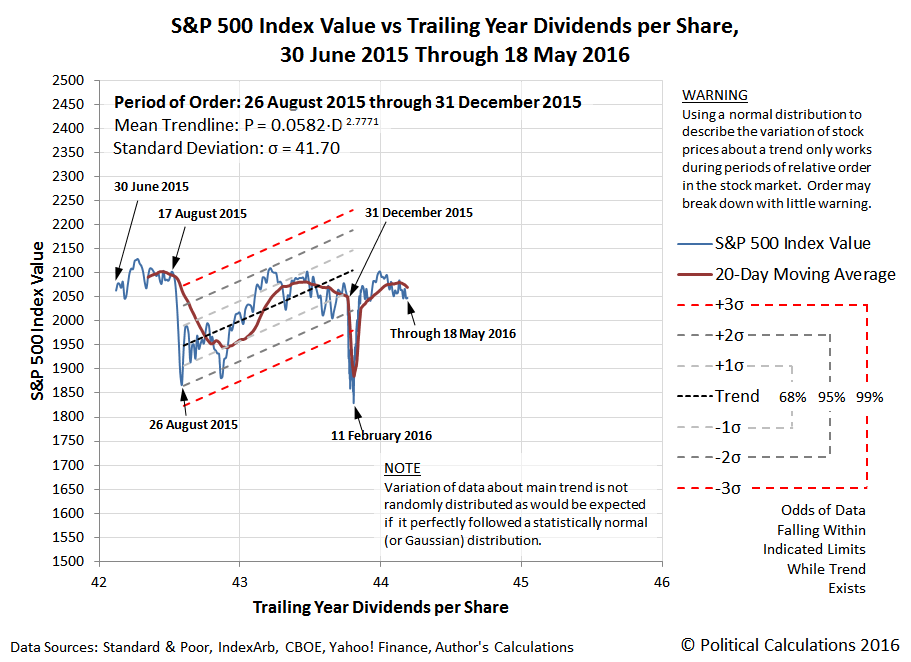Last year, on 20 August 2015, a four year long period of order in the U.S. stock market came to a crashing end.
What has happened since then?
After the initial shock, which ended on 26 August 2015, order briefly returned to the S&P 500, but only through the end of 2015.
As yet, not enough time has passed to determine whether order has returned to the U.S. stock market following the disruptive noise event of January-February 2016. But if you're the type who needs something to worry about, compare the path that stock prices followed in the period from 30 June 2015 through 17 August 2015 to the path that stock prices have taken from 31 December 2015 through 18 May 2016.
So what do you think comes next?
Welcome to the blogosphere's toolchest! Here, unlike other blogs dedicated to analyzing current events, we create easy-to-use, simple tools to do the math related to them so you can get in on the action too! If you would like to learn more about these tools, or if you would like to contribute ideas to develop for this blog, please e-mail us at:
ironman at politicalcalculations
Thanks in advance!
Closing values for previous trading day.
This site is primarily powered by:
CSS Validation
RSS Site Feed
JavaScript
The tools on this site are built using JavaScript. If you would like to learn more, one of the best free resources on the web is available at W3Schools.com.

